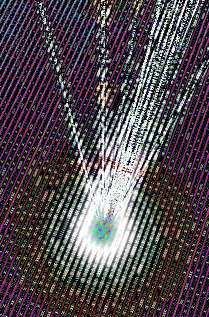Tiny finding to improve tech
 A new discovery could improve everyday technology, from more efficient solar panels and brighter TV screens to advanced medical diagnostics.
A new discovery could improve everyday technology, from more efficient solar panels and brighter TV screens to advanced medical diagnostics.
Curtin University researchers have been looking at how molecules, known as ligands, interact with the surface of tiny nanocrystals.
Associate Professor Guohua Jia from Curtin’s School of Molecular and Life Sciences led the research, which found out how the shape of zinc sulphide nanocrystals affects the ability of ligands to stick to their surface. These ligands are essential in controlling the performance of nanocrystals in technology.
“Ligands are crucial for controlling the behaviour and performance of zinc sulphide nanocrystals,” Jia says.
“We found that flatter particles - called nanoplatelets - allow more ligands to attach tightly, compared to shapes like nanodots and nanorods.”
This ability to control nanocrystal shapes could lead to significant efficiency improvements in various applications.
“From brighter LED lights and screens to more efficient solar panels and detailed medical imaging, controlling particle shapes could revolutionise product efficiency,” Jia said.
The discovery holds great potential for optoelectronics, devices that produce or use light. These technologies are vital in telecommunications, medical devices, and energy production.
“Optoelectronics are central to manipulating light and electricity, such as in LEDs, solar cells, photodetectors, and laser diodes,” Jia said.
LEDs, used in light bulbs and TV screens, convert electricity into light. Solar cells that turn sunlight into electricity could also become more efficient. Additionally, photodetectors, found in cameras and sensors, and laser diodes, used in fibre-optic communication, stand to benefit from the research too.
The study is published in the Journal of the American Chemical Society.








 Print
Print